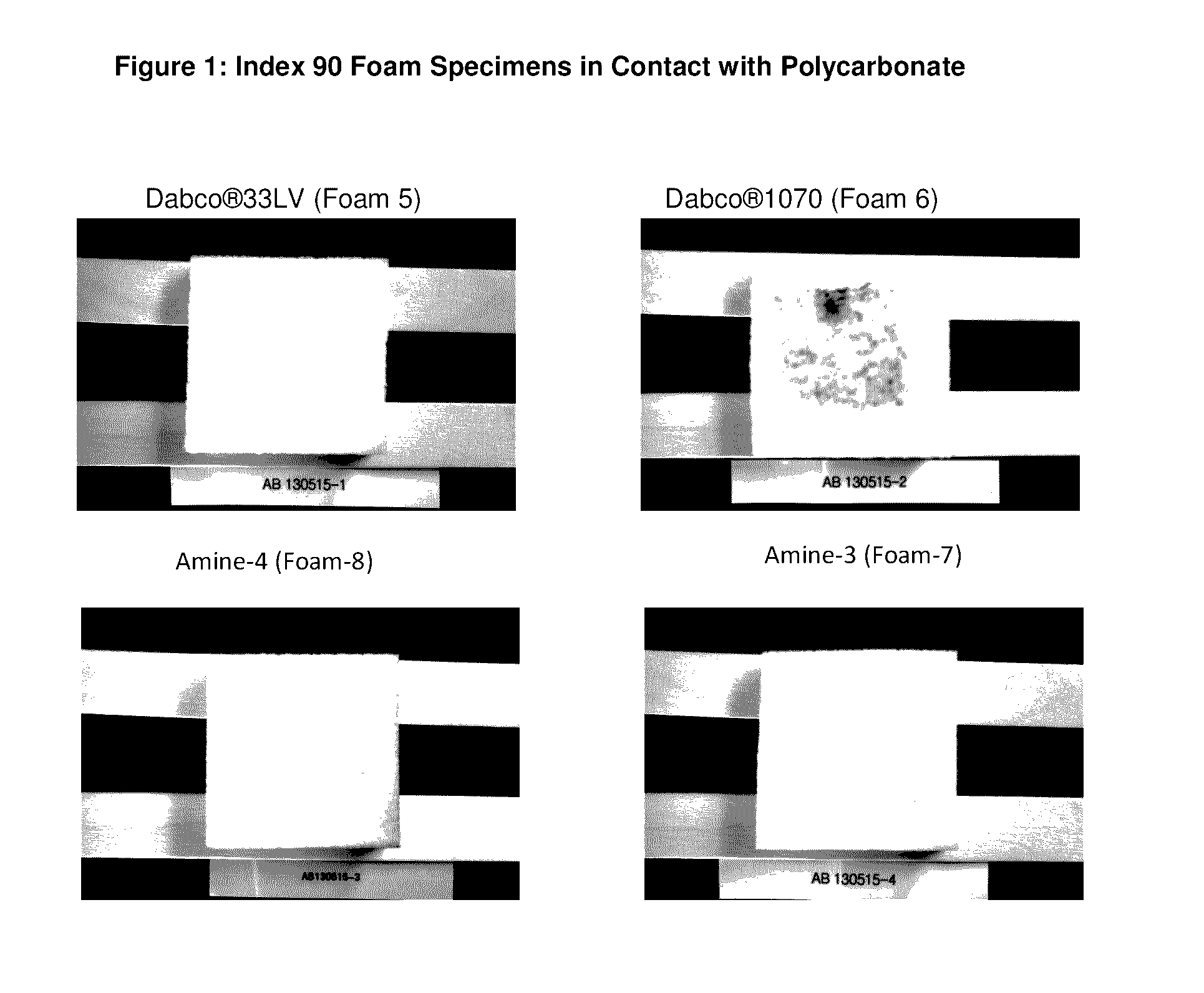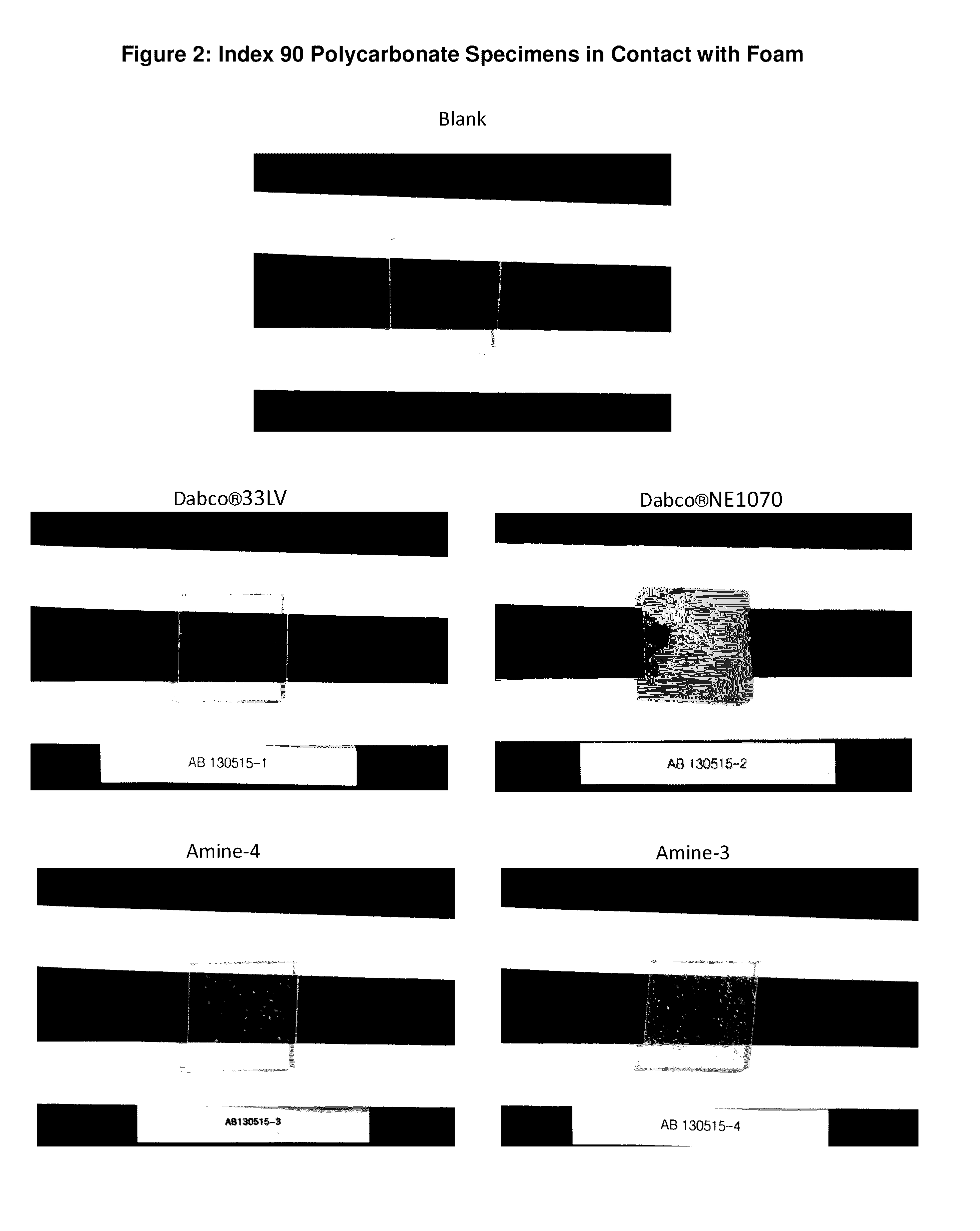Reactive amine catalysts for polyurethane applications
- Summary
- Abstract
- Description
- Claims
- Application Information
AI Technical Summary
Benefits of technology
Problems solved by technology
Method used
Image
Examples
example 1
Synthesis of N, N-Bis-(dimethylaminopropyl)-N-(3-aminopropyl)-amine
[0086]In the first step, a 1000 ml stainless steel reactor was charged with 424 g of bis(dimethylaminopropyl) amine and 23 g of water. The reactor was purged with nitrogen, heated up to 75° C. and 126 g of acrylonitrile was slowly fed in the reactor over a period of 1.5 hours. After all acrylonitrile was transferred into the reactor the temperature was maintained at 75° C. for an additional 4.0 hours. The reaction mixture was allowed to cool down to 25° C. and the product was removed from the reactor and analyzed by gas chromatography (GC) giving 96% yield of desired product 2-cyanoethyl-bis(dimethylaminopropyl)amine. In the second step, a 1000 ml stainless steel reactor was charged with 198 g of isopropanol and 6.9 g of standard Raney-Cobalt catalyst. The reactor was purged with nitrogen three times and the temperature was increased to 120° C. The reactor was pressurized with 800 psi of hydrogen and cyanoethyl-bis(d...
example 2
Synthesis of N, N-Bis-(dimethylaminopropyl)-N-(3-aminopropyl)-urea
[0087]Amine-1 and urea (1:1 molar ratio) was charged into a 4-neck round bottom flask and the flask was then purged with nitrogen. A condenser on top of the flask was filled with ice water mix and a scrubber that consumed the ammonia by-product as it bubbled through a 30% acetic acid solution. Temperature of the reaction was increased to 120° C. with mechanical stirring. The reaction is then held at 120° C. for 90 min during which the solution changed from white opaque to yellow clear solution. All the volatiles are then removed under vacuum on rotovap before the final product is collected.
example 3
Synthesis of Bis-[N, N-Bis-(dimethylaminopropyl)-N-(3-aminopropyl)]-urea
[0088]Amine-1 and urea (2:1 molar ratio) was charged into a 4-neck round bottom flask which was then purged with nitrogen. A condenser on top of the flask was filled with ice water mix and a scrubber that will consume the ammonia by-product is filled with 30% acetic acid solution. The mixture was mechanically stirred and the temperature was increased to 120° C. The reaction was then held at 120° C. for 90 min during which the solution changed from white opaque to yellow clear solution. Then, the temperature of the reaction was increased to 155° C. The reaction was held at 155° C. for 90 min during which the reaction changed from light yellow clear solution to dark orange clear solution. All the volatiles were then removed under vacuum on rotovap before the final product is collected.
PUM
| Property | Measurement | Unit |
|---|---|---|
| Temperature | aaaaa | aaaaa |
| Temperature | aaaaa | aaaaa |
| Volume | aaaaa | aaaaa |
Abstract
Description
Claims
Application Information
 Login to View More
Login to View More - R&D
- Intellectual Property
- Life Sciences
- Materials
- Tech Scout
- Unparalleled Data Quality
- Higher Quality Content
- 60% Fewer Hallucinations
Browse by: Latest US Patents, China's latest patents, Technical Efficacy Thesaurus, Application Domain, Technology Topic, Popular Technical Reports.
© 2025 PatSnap. All rights reserved.Legal|Privacy policy|Modern Slavery Act Transparency Statement|Sitemap|About US| Contact US: help@patsnap.com



